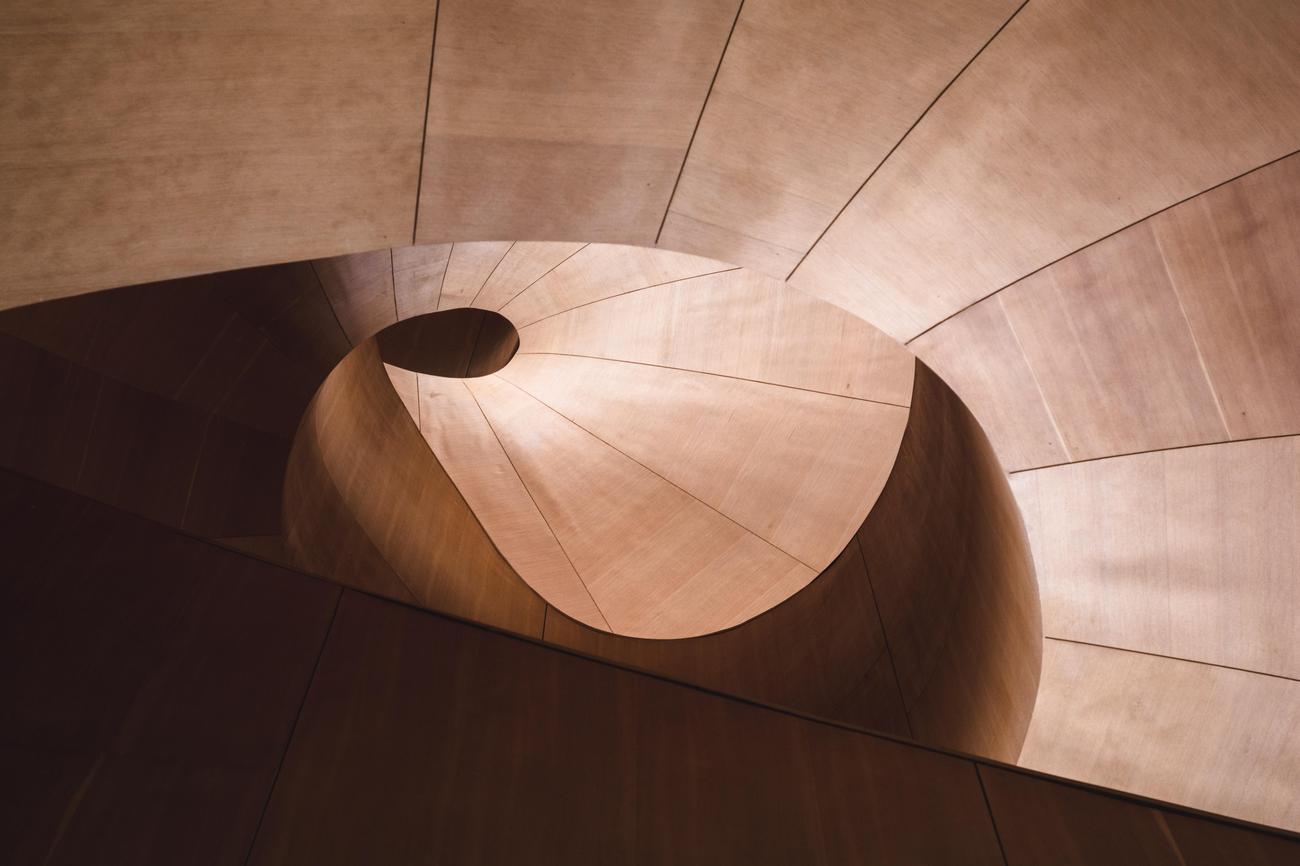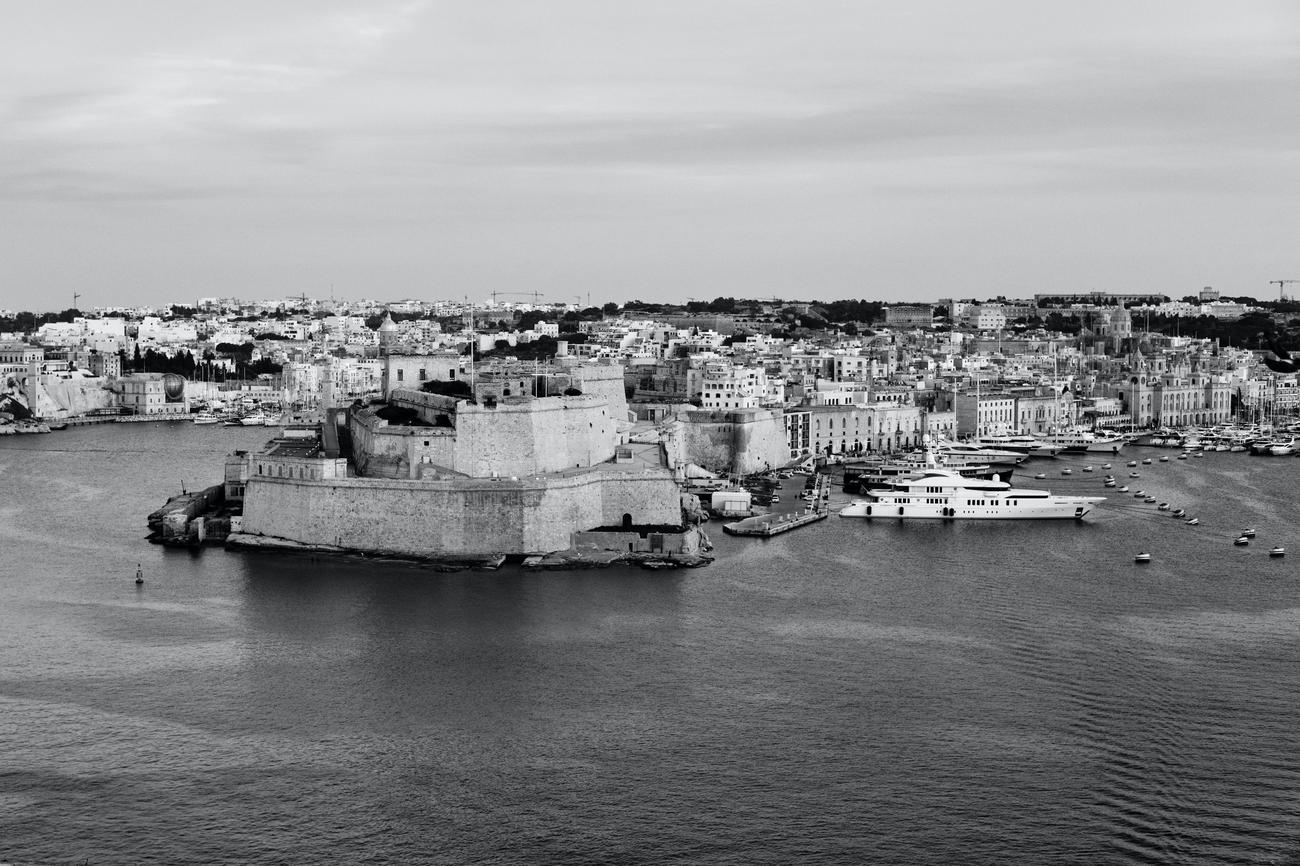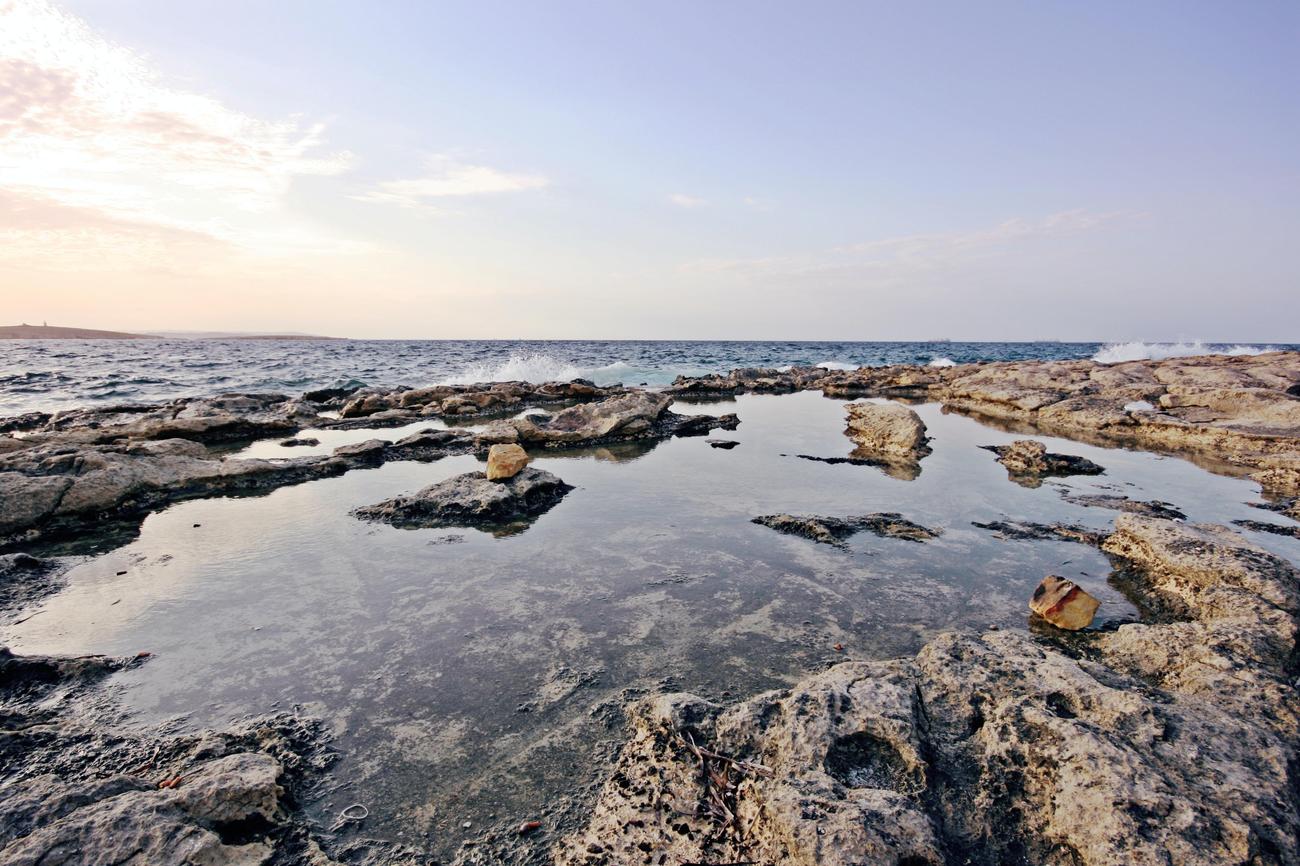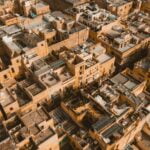Are you curious about the fascinating population dynamics of Malta? Look no further! In this article, we will delve into the intricate details of Malta’s population, examining its implications, challenges, and notable shifts. As we explore this captivating subject, we will uncover the factors influencing Malta’s population growth and how it shapes the social and economic landscape of this enchanting Mediterranean country. So, buckle up and get ready to embark on a captivating journey through the enthralling world of Malta’s population dynamics.

Malta Population
Malta’s Population: An Exploration of Demographic Trends
Malta, a small archipelago nestled between Italy and Libya in Southern Europe, boasts a population of approximately 523,420 as of 2022. The island, known for its rich historical heritage and Mediterranean charm, has experienced significant shifts in its population dynamics over the years.
To truly understand Malta’s population dynamics, we must delve into the factors contributing to its growth, the challenges faced by its inhabitants, and the resulting implications for the country’s social and economic landscape.
Historical Influences on Malta’s Population
Malta’s location at the crossroads of civilizations has shaped its population throughout history. The island has been inhabited since the Neolithic period, with archaeological evidence dating back to around 5900 BC. Over the centuries, Malta has been ruled by various powers, including the Phoenicians, Carthaginians, Romans, Arabs, Normans, Knights of St. John, French, and British.
These successive occupations have left a lasting impact on Malta’s population composition, introducing diverse cultural influences and fostering a multicultural society. Today, Malta embraces its rich heritage, evident in its official languages of Maltese and English, as well as the population’s proficiency in Italian.
The Modern Challenges of Population Growth
While Malta’s population has seen steady growth over the years, this upward trend presents its own set of challenges. The limited land area and resources of the small island nation pose constraints on accommodating a rapidly increasing population. Coupled with its heavy reliance on tourism, the pressures of population growth require careful management and planning.
As more people flock to Malta’s shores in search of economic opportunities and a high quality of life, the demand for housing, infrastructure, and public services intensifies. Striking a balance between preserving the island’s cultural heritage and catering to the needs of a burgeoning population is no easy task.
The Implications of Demographic Shifts
The demographic shifts within Malta’s population have far-reaching implications for the country’s social and economic fabric. With an aging population and declining fertility rates, Malta faces the challenges posed by an increasingly elderly cohort.
As older citizens make up a larger proportion of the population, the strain on healthcare, pension systems, and social support networks becomes more pronounced. At the same time, the declining birth rates contribute to a shrinking workforce, potentially affecting the country’s productivity and economic growth.
Navigating the Future
Understanding Malta’s population dynamics is crucial for policymakers and government officials as they seek to address the challenges and harness the opportunities presented by these shifts. Collaboration between stakeholders from various fields, including sociology, economics, and urban planning, is essential to shape policies that cater to the changing needs of Malta’s inhabitants.
Efforts must be directed towards sustainable development, innovation, and fostering a resilient and inclusive society. By investing in education, healthcare, and infrastructure, Malta can better equip itself to meet the demands of a changing population landscape while preserving its unique cultural identity.
In Conclusion
Malta, with its captivating history and idyllic Mediterranean setting, continues to evolve in the face of population dynamics. By understanding the implications, challenges, and shifts within Malta’s population, we can pave the way for a prosperous and harmonious future.
As we delve into the intricacies of Malta’s demographics, it becomes clear that managing population growth, maintaining social cohesion, and addressing the needs of an aging population require careful consideration and collaboration. By doing so, Malta can navigate the complexities of its population dynamics and ensure a thriving and sustainable future for generations to come.
“The mirage of Malta’s population is a delicate tapestry woven by the threads of history, culture, and the aspirations of its people.”
Malta, a small but captivating Mediterranean island, holds a treasure trove of fascinating stories and intriguing history. If you ever find yourself yearning to uncover the hidden gems of this enchanting destination, look no further! We have curated a list of interesting facts about Malta that will leave you awe-inspired and eager to embark on your own Maltese adventure. Click here to delve into these captivating facts: interesting facts about malta. Brace yourself for a journey through Malta’s rich heritage, jaw-dropping architecture, and breathtaking natural beauty. Prepare to be enthralled!
Malta Population:
Have you ever wondered about the population of Malta? Well, let me tell you, it’s a fascinating topic! Malta has been experiencing a remarkable population growth rate in recent years. With a keyword like “Malta population growth rate,” it’s hard not to be intrigued. If you’re curious to learn more about this subject, just click here: Malta population growth rate.
Now, let’s dive into another captivating aspect – Malta population density. This tiny island nation has a surprisingly high population density, and it’s quite interesting to explore. If you want to dig deeper into this intriguing topic, click here: Malta population density.
Lastly, we cannot forget about Malta population demographics. Understanding the demographic makeup of a country provides valuable insights into its culture and society. If you’re curious about Malta’s population demographics, click here: Malta population demographics.
Now that we’ve piqued your curiosity and provided the essential links, it’s time for you to dive deeper into the captivating world of Malta’s population. Enjoy exploring!
Malta in 2023: A Fascinating Island with 46 Incredible Facts
[youtube v=”pj18YL0gbO4″]
Malta, a captivating Mediterranean island, is renowned for its ancient cities, stunning beaches, and the enchanting Silent City of Medina. In this article, we delve into the wonders of Malta, uncovering 46 fascinating facts that make this island truly remarkable.
A Trio of Islands
Malta is not just a single island but part of a trio that forms the Republic of Malta. Alongside its charming siblings Gozo and Comino, these islands are bursting with exciting adventures and breathtaking views.
The Malta International Air Show
Every September, Malta hosts the Malta International Air Show, one of the largest outdoor events in the country. This spectacular show features acrobatic and military aircraft displays, attracting aviation enthusiasts from around the world.
Valletta: Europe’s Smallest Capital
Valletta, the capital city of Malta, holds the distinction of being the smallest national capital in the European Union. Spanning just 0.4 square miles, this UNESCO World Heritage site is a treasure trove of history, culture, and architectural beauty.
A Hollywood Hotspot
Surprisingly, Malta is not just a destination for travelers, but also a favorite location for Hollywood filmmakers. Blockbusters like “Game of Thrones,” “Gladiator,” and “Pirates of the Caribbean” have all been filmed amidst Malta’s stunning landscapes and captivating beauty.
On the Left Side of the Road
One unusual fact about Malta is that traffic drives on the left-hand side. This tradition dates back to the British colonial period, which ended in 1964.
The Vibrant Luzzu
When in Malta, keep an eye out for the vibrant Luzzu. These traditional Maltese fishing boats, adorned with a pair of protective eyes on their bow, splash color and culture throughout Maltese waters. The Luzzu is a national symbol that is impossible to miss.
A Link to Europe’s Past
Although located in the heart of the Mediterranean, Malta was once physically connected to Europe. Around 20,000 years ago, during the last ice age, lower sea levels connected the islands to Sicily and mainland Italy.
A Nation of Homeowners
Maltese people have one of the highest rates of home ownership in the world. Over 80% of Maltese people own their homes, reflecting a strong sense of stability and investment in the country.
The Iconic Azure Window
Malta’s spirit remained unbroken even after the loss of the iconic Azure Window in 2017. This breathtaking natural arch, which loomed over the sea, was a favorite among filmmakers and photographers. Despite its absence, Malta’s natural beauty continues to captivate visitors.
A Land of Churches
With over 360 churches scattered across the islands of Malta, Gozo, and Comino, the Republic of Malta is a haven for religious history. Visitors can explore a different church nearly every day of the year, each with its unique charm and significance.
A Diver’s Paradise
Boasting crystal clear waters, teeming marine life, and intriguing shipwrecks, Malta is one of the world’s top diving destinations. Whether you’re a novice or an experienced diver, the underwater adventures in Malta promise unforgettable experiences.
Marsaxlokk: A Fishing Village Delight
Marsaxlokk, a traditional fishing village in Malta, is famous for its Sunday Fish Market. Here, locals and tourists alike can purchase the freshest seafood straight from the fishing boats, truly immersing themselves in the vibrant local culture.
The Maltese Cross
The Maltese Cross, with its eight-pointed design, is more than just a pretty symbol. It represents the eight virtues of the knights and is recognized worldwide for its historical and cultural significance.
Malta’s Music Festivals
Malta knows how to hit the right notes when it comes to music festivals. The Isle of MTV Malta is just one example of the annual music festivals that attract global attention. These festivals bring world-class artists and large crowds, transforming the island into a pulsating stage.
IL Carnival: A Spectacle of Color
Malta knows how to party with its centuries-old tradition of IL Carnival ta’ Malta, a vibrant and colorful celebration. For a whole week, the island transforms into a kaleidoscope of floats, costumes, and traditional Maltese dances.
The Silent City: Medina
Medina, an ancient walled city steeped in medieval architecture, is often referred to as the Silent City. Cars, except those of residents, are not allowed within its walls, creating a serene and peaceful atmosphere for exploration and enjoyment.
Taking Siestas Seriously
The Maltese take siestas seriously. Traditionally, shops and businesses close for a few hours in the afternoon, allowing everyone a break from the summer heat. This practice helps maintain a healthy work-life balance and contributes to the overall well-being of the community.
Maltese Lace: A Cherished Craft
Maltese lace, known as bizzilla, is a traditional art form that has been passed down through generations. This intricate lacework, characterized by vibrant colors and intricate patterns, holds a special place in Maltese culture and continues to be a beloved craft.
Discovering Maltese Wines
Malta is home to a variety of local vineyards and wineries. The island’s unique climate and soil conditions contribute to the production of distinct wines that are difficult to replicate elsewhere. Native grape varieties like Gellewza and Ghirgentina are must-tries for any wine enthusiast.
Malta: A Land without Forests or Mountains
Unlike most European countries, Malta does not have forests or mountains. Its highest point, Ta’ Dmejrek, stands at just 830 feet above sea level. However, Malta’s diverse coastline, rocky cliffs, and sandy beaches make it a picturesque destination for nature lovers.
The International Fireworks Festival
Fireworks hold a significant place in Maltese celebrations, and every year Malta hosts the famous International Fireworks Festival. This festival showcases spectacular firework displays, reflecting the island’s rich historic and cultural heritage.
Embracing Local Traditions: The Festa
The Festa, a local village feast dedicated to the patron saint, is an integral part of Maltese culture. During these celebrations, expect fireworks, food stalls, band marches, and a lively community spirit. The Festa is a joyous occasion that brings locals and visitors together in celebration.
Maltese Glassware: A Unique Craft
Malta is known for its traditional glassware, which is often purchased as a keepsake or gift. Maltese glass is characterized by its vibrant colors and intricate patterns, marking it as a unique and beloved craft that represents the island’s artistic heritage.
Savoring Maltese Cuisine
Maltese cuisine is a delicious blend of Mediterranean influences, combining Italian, English, and Arab flavors. From savory dishes like rabbit stew and fish pie to the renowned Maltese bread known as ftira, there are countless culinary delights to explore and fall in love with.
The Lively Nightlife of Malta
Despite its small size, Malta boasts a vibrant nightlife. Areas like Paceville and Saint Julian’s are packed with bars, clubs, and restaurants where locals and tourists alike can revel in the lively atmosphere and entertainment.
The Manuel Theater: A Historic Gem
Malta is home to the world’s oldest operational theater, the Manuel Theater. Built in 1731, this theater continues to be a vibrant hub for local and international performances, showcasing the island’s love for arts and culture.
Discovering the Three Cities
The Three Cities—Vittoriosa, Senglea, and Cospicua—offer a glimpse into authentic Maltese life. With their narrow streets, grand churches, and waterfront defenses, these cities tell a story of knights, war, and resilience, attracting visitors seeking a deeper understanding of Malta’s history.
The Maltese Falcon: A Symbol of Maritime Tradition
The Maltese Falcon holds symbolic significance in Malta’s long-standing maritime tradition. Today, the annual Rolex Middle Sea Race, a prestigious yachting event, culminates in the awarding of the Maltese Falcon trophy, paying homage to the island’s seafaring heritage.
Magical Folk Tales of Malta
Malta is a land filled with magical folk tales featuring mythical animals and special beings. One famous story revolves around the Mosta Lion, a mythical creature believed to have inhabited the Mosta valleys.
Charming Maltese Townhouses
Traditional Maltese townhouses are easily recognizable by their covered balconies, known as gallarija. These enclosed wooden balconies, often adorned with vibrant colors, add a charming touch to the local architecture, reflecting the island’s unique character.
Exploring the Blue Grotto
The Blue Grotto, a series of sea caverns on Malta’s south coast, is famous for its stunning blue waters. It is a popular destination for boat trips, allowing visitors to marvel at the natural beauty of the caves and their captivating blue hues.
Cars and Malta’s High Ownership Rate
Despite its small size, Malta has one of the highest car ownership rates in the European Union. This high number of cars poses transportation and traffic challenges, especially given the limited land area of the island.
The Illuminated Festival of Birgu
Each November, the city of Birgu, also known as Vittoriosa, is illuminated by thousands of candles during a festival known as BirguFest. This magical event showcases the beauty of Birgu’s historic streets and creates a captivating atmosphere.
Public Transportation in Malta
Malta does not have a railway system, but it relies on buses, taxis, and ferries for public transportation. These modes of transport cater to the transportation needs of both residents and tourists, ensuring convenient travel across the islands.
Malta’s Diverse Coastline
Malta’s coastline is a picturesque mix of rocky cliffs and sandy beaches. Melia Bay, Golden Bay, and Paradise Bay are among the popular beaches that offer a range of recreational activities and stunning views for beachgoers to enjoy.
A Nation of Literacy
Malta boasts a high literacy rate, estimated at around 94% for children between the ages of 5 and 16. Education is compulsory in Malta, reflecting the nation’s commitment to providing quality education for its younger population.
Malta’s Mediterranean Climate
With its Mediterranean climate, Malta enjoys mild, rainy winters and hot, dry summers. The island experiences one of the highest amounts of sunshine hours in Europe, making it a sought-after destination for sun-seekers.
Football in Malta
Despite its size, Malta has its own professional football league, the Maltese Premier League. The national team also participates in UEFA and FIFA competitions, showcasing the passion for football among Maltese sports enthusiasts.
Malta’s Flora and Fauna
Malta’s unique Mediterranean climate makes it a haven for diverse flora and fauna. Over one thousand species of plants, including several endemic species, thrive on the islands, contributing to the rich biodiversity of Malta’s natural environment.
Enjoying a Local Beer: Cisk
Cisk, a beer brewed since 1929, holds a special place in Maltese culture. This award-winning beer is often enjoyed alongside local dishes, offering a taste of Malta’s brewing traditions and culinary delights.
Wheat and Coins: Symbols of Good Luck
Maltese weddings feature a unique tradition known as the throwing of wheat and coins. This ritual symbolizes prosperity and good luck for the newlyweds, adding a touch of tradition and charm to Maltese wedding celebrations.
Water, a Precious Resource
Malta does not have rivers or lakes, making water a precious resource on the island. Supplies mainly come from desalination plants, underground aquifers, and rainfall. The conservation and efficient use of water are essential to ensure sustainability.
Megalithic Temples: Ancient Structures
Malta is home to some of the oldest freestanding structures in the world. The megalithic temples of Malta, including Ggantija, Mnajdra, and Hagar Qim, predate the pyramids of Egypt. These remarkable structures have been designated as UNESCO World Heritage sites.
Tempting Pastizzi: A Local Snack
Maltese people have a deep love for pastizzi, savory pastries filled with either ricotta cheese or peas. These scrumptious treats are a favorite local snack and a must-try for visitors looking to experience the tasteful delights of Malta.
A Tourist Haven
With its stunning beaches, rich history, and warm hospitality, Malta attracts more than 1.6 million tourists each year. This number exceeds three times the population of the island, making it a testament to the island’s allure and popularity as a tourist destination.
In conclusion, Malta is a captivating island that offers a blend of natural beauty, rich history, and vibrant culture. From its ancient cities and pristine beaches to its thriving nightlife and delicious cuisine, Malta has something to offer every visitor. As the island’s population continues to evolve and face various challenges, it is crucial to maintain a balance that preserves Malta’s heritage while embracing sustainable development and innovation. With careful planning and collaboration among stakeholders, Malta can navigate the complexities and seize the opportunities of its changing population dynamics, ensuring a prosperous and harmonious future for the island.

FAQ
Question 1: What is the current population of Malta?
Answer 1: As of 2022, Malta has a population of approximately 523,420.
Question 2: What currency is used in Malta?
Answer 2: The currency used in Malta is the Euro.
Question 3: What is the capital city of Malta?
Answer 3: The capital city of Malta is Valletta, which is considered the smallest national capital in the European Union.
Question 4: What are the official languages of Malta?
Answer 4: The official languages of Malta are Maltese and English, and a significant portion of the population is conversant in Italian.
Question 5: What is the climate like in Malta?
Answer 5: Malta has a Mediterranean climate, characterized by hot, dry summers and mild, wet winters.
- Star Ring Trends: Etsy vs Amazon - March 28, 2025
- Boost Pollinator Habitats: Baby Blue Eyes Sustainable Farming Guide - March 28, 2025
- Protect Big Black Bears: Effective Conservation Strategies - March 28, 2025
















